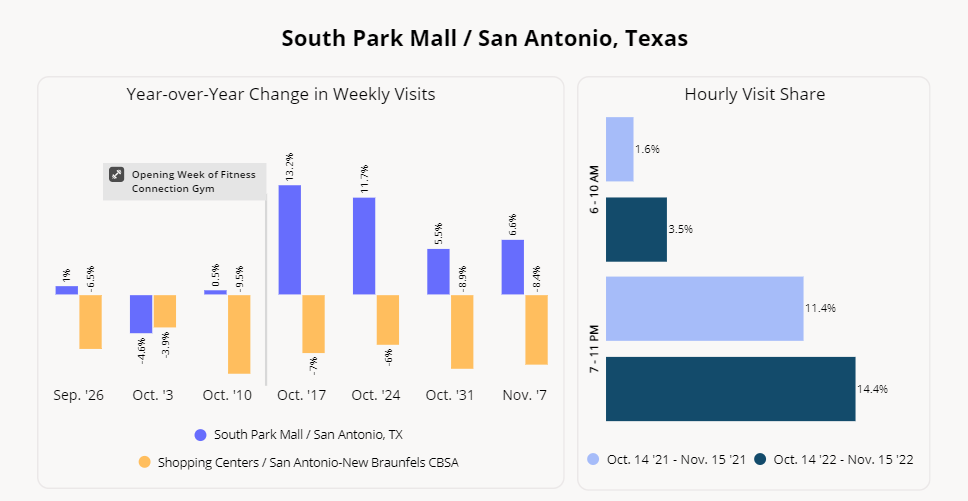
Brick-and-mortar retail has had a tumultuous few years, from the lockdowns of 2020 to the high gas prices and inflation of 2022. Yet, consumer demand for in-person retail and services has remained strong, with key categories bouncing back after each new challenge.
Our latest white paper dives into some of the key trends likely to shape the retail landscape in 2023. We examined foot traffic data, migration trends, and office recovery patterns to better understand what the coming year may have in store. Keep reading to find out what retail and retail services in the brick-and-mortar consumer space need to know going into the new year.
The Tenant Diversity Trend Picks Up Pace
Pre-pandemic, the defining narrative in brick-and-mortar retail was the retail apocalypse, driven heavily by widespread store closures from top retailers like Sears and K-Mart. Yet, while many previously strong anchors were shutting their doors, a far more significant trend was emerging where retail-oriented centers and malls were embracing new tenant types. From gyms to co-working spaces to medical practices, the growing presence of non-retail tenants has made a lasting and significant impact on the brick-and-mortar retail landscape.
These tenants provide a range of benefits. They increase opportunities for retailers by generating new off-peak traffic and reducing competition between retail tenants. Non-retail tenants also allow shopping center visitors to have a more holistic, immersive experience which extends visit durations and gives consumers more reasons to frequent a shopping center. And non-retail tenants dramatically increase optionality for landlords by empowering shopping center operators to identify the ideal tenant without the standard limitations dictated by traditional understandings of fit.
The result is a unique win-win-win situation that benefits landlords, tenants, and visitors. Expect landlords to be particularly fond of this trend as it increases their optionality in a period where demand for space in top tier centers is only increasing.

The Rise of the B Mall
The idea that the U.S. is fundamentally overmalled is almost as widespread as the retail apocalypse narrative. But while there is truth to this argument, a key trend indicates that the narrative may be exaggerated.
The wider diversity of tenants coming to top tier malls and the growing number of brands jostling for these now limited openings has increased competition for space, driving many potential tenants to look elsewhere. Alternatives include open-air lifestyle centers, downtown areas, and strip centers, as well as shop-in-shops and pop-ups.
But there is also the very real potential for retailers to look at less popular malls for their next location – and the opportunity here is significant. Retailers that had struggled to stand out within a packed top-tier mall may find that their role in a lower-class mall is actually elevated, giving them a stronger position within the market and more sales. And if these malls shift their focus from competing with the regional supermalls to focusing on specific audiences or providing differentiated experiences, the potential symbiosis can be powerful.
Critically, the rise of lower-tier malls demands that these shopping centers embrace the opportunity and focus on differentiation and audience targeting as means of driving necessary visits – especially considering the strength of top tier malls is increasing, not diminishing. But, if this shift does take place, it will prove that the magnitude to which we are in fact overmalled is far less than previously expected.

The past few years have seen the retail world undergo more than one significant and far-reaching transformation – yet, brick-and-mortar is proving its resilience and ability to adapt to new circumstances.
To learn more about the data behind this article and what Placer has to offer, visit https://www.placer.ai/.







Sign up to receive our stories in your inbox.
Data is changing the speed of business. Investors, Corporations, and Governments are buying new, differentiated data to gain visibility make better decisions. Don't fall behind. Let us help.













Sign up to receive our stories in your inbox.
Data is changing the speed of business. Investors, Corporations, and Governments are buying new, differentiated data to gain visibility make better decisions. Don't fall behind. Let us help.





